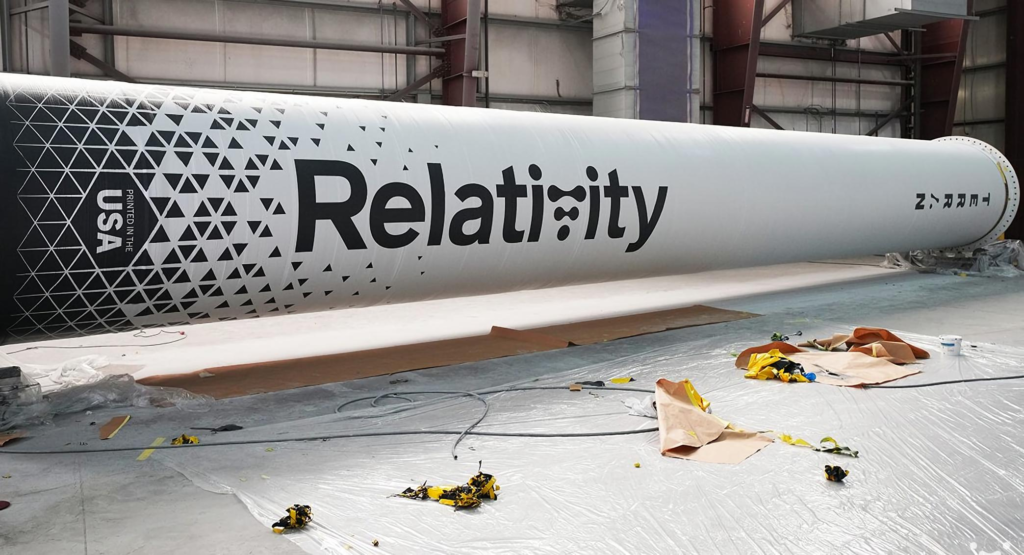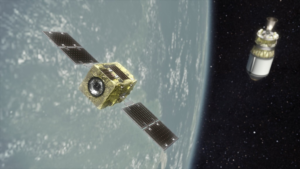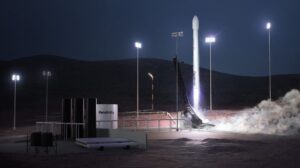
More Successful Tests For Relativity In Preparation For First Launch
Relativity Space like a few other companies within the space industry has been busy preparing for the first launch of its rocket. The company has kept us updated over the last few months as they transport, set up, and test some of the rocket’s major components and stages prior to the first launch attempt. Based on recent news it seems that things are going as intended and a launch is not far away.
Specifically, yesterday the company managed to complete a 57 second stage test which was their longest yet. The stage seems to have performed as expected and given the company the confidence to move on to a full duration test. If successful, Relativity will practically be ready to try and launch the first 3D printed rocket into orbit. This mission marks a lot of firsts not only for the company but the space industry as well.
Relativity has chosen to go down a unique path in terms of launch vehicle development and manufacturing. While very ambitious, it could provide a large host of benefits including low launch cost, high launch cadence, and lower part count, just to name a few. Here I will go more in-depth into yesterday’s test, the plan going forward, what to expect in the coming weeks, and more.
Yesterday’s Test

For the past few weeks especially, Relativity has kept us updated on various tests and milestones before the company’s first launch. Specifically, just around 1 month ago the company tweeted saying, “Another 1st in the books! Completed a full duration 20-second hot fire for all nine Aeon 1 engines on Stage 1 of Terran 1, the world’s first 3D printed rocket (w/ entirely 3D printed engines!)” This test was a big first step for Relativity and gave them the confidence to move on to an even longer duration burn. Just yesterday on the 20th CEO of Relativity Tim Ellis tweeted mentioning, “Completed 57 second stage test today as we work toward full duration test – our longest yet! Stunning, super proud of work team is doing, a big step forward!” This included an over minute long video of the test fire. This specific test began prep on the 13th of this month but was delayed by at least a few days due to weather. However, now with the test complete and successful, the company will work toward the full duration test and soon after the actual launch attempt.
In terms of this first launch of Terran 1, Relativity has scheduled the mission, called “GLHF” (Good Luck, Have Fun), from Launch Complex 16 (LC-16) in Cape Canaveral in summer 2022. With it being the end of summer its clear that it will take more time before the launch happens. This being said, the launch of Terran 1 is the first orbital attempt by Relativity and some delays are expected as they make sure to take their time for the best chance of success. As a two-stage, 110ft. tall, 7.5 ft. wide, expendable rocket, Terran 1 is the largest 3D printed object to exist and to attempt orbital flight. Working towards its goal of being 95% 3D printed, Relativity’s first Terran 1 vehicle is 85% 3D printed by mass. As a next generation launch vehicle, Terran 1 is designed for the future of constellation deployment and resupply. Its unique and software-driven architecture is meant to accommodate satellite customers’ evolving needs, while also providing the most agile and affordable launch service on the market. Designed and printed in the USA, Relativity is confident that Terran 1 is the most innovative product to emerge from the aerospace manufacturing industry since the dawn of privatization of space 20 years ago.
Terran 1 has nine Aeon engines on its first stage, and one Aeon Vac on its second stage. Like its structure, all Relativity engines are entirely 3D printed, and use liquid oxygen (LOX) and liquid natural gas (LNG), which are not only one of the best for rocket propulsion, but also for reusability, and the easiest to eventually transition to methane on Mars. As one of the few LOX/LNG fueled rockets in the industry, Terran 1 is racing to be the first LOX/LNG rocket to fly.
One of the main reasons this first test flight is so significant is the manufacturing process behind it and the implications it could have on the future of accessing space. As partially mentioned prior, Terran 1 is a majority 3D printed rocket including major components such as the engines. Specifically, Relativity’s proprietary Factory of the Future centers on Stargate, the world’s largest metal 3D printers, that create Terran 1, the world’s first 3D printed rocket, and the first fully reusable, entirely 3D printed rocket, Terran R, from raw material to flight in 60 days. Relativity’s Stargate printers’ patented technology is working to enable an entirely new value chain and innovative structural designs that make Terran 1 and Terran R possible. By developing its Factory of the Future and rockets together, Relativity accelerates its ability to improve design, production, quality, and speed. All of which will be put to the test apart of this first launch not long from now.
First Test Flight

Now that we know more about the recent test success and part of the launch vehicle itself, we can take a closer look at the launch complex and more of what makes this test flight so important. Back in 2019, Relativity was granted a Right of Entry for its own rocket launch facilities at Launch Complex 16 (LC-16) at Cape Canaveral Air Force Station in Florida by The 45th Space Wing of the United States Air Force. The Right of Entry signified the U.S. Air Force’s formal acceptance of Relativity to build and conduct launch operations from Cape Canaveral Air Force Station. This is the first and only direct agreement the U.S. Air Force has completed with a venture-backed orbital launch company at LC-16, and includes on-site vehicle integration and payload processing, with the opportunity to extend to an exclusive 20-year term. Relativity joins SpaceX, ULA, and Blue Origin as only the 4th company with a major operational orbital launch site at Cape Canaveral. This is the exact site where the recent Terran 1 tests and launch prep has been happening.
The LC-16 launch facility was historically used for Titan missile launches, the Apollo moon program, the Gemini program, and Pershing missile launches. Launch infrastructure is in limited supply, and LC-16 is one of the few major launch facilities still available at Cape Canaveral. LC-16 is capable of supporting Relativity’s rocket, Terran 1, the first and only fully 3D printed rocket in the world, as well as the company’s future expansions in payload capacity, and comes with substantial existing infrastructure and operational history. Additionally, Relativity has hired a team made up of former senior leadership personnel from top space companies, who have executed over 158 successful launches at Cape Canaveral. This combination is trying to enable Relativity to more quickly build and operate a rocket launch facility.
In terms of a facility and the process of creating and launching rockets, Relativity often points out that for 60 years, aerospace manufacturing has relied on large factories, fixed tooling, complex supply chains, and extensive manual labor to build costly rockets comprised of 100,000+ parts in 2 years or longer. In order to accelerate innovation in the industry, Relativity built its Factory of the Future, the first aerospace platform to automate rocket manufacturing, vertically integrating intelligent robotics, software, and data-driven 3D printing technology. Incorporating Stargate, the world’s largest metal 3D printer with AI-driven controls, this Factory of the Future tries to continuously optimize production, which would result in greatly compounded quality and time improvements, lower costs, and product designs previously not possible. Relativity is an application-layer 3D printing company that is starting with rockets, and will extend its Factory of the Future to all of aerospace.
It’s important to point out that this launch has been delayed quite a bit over the last few years. Back in 2019 Relativity Space was working toward the first launch of Terran 1 with an expected launch date of 2020. This being said, there were a lot of different factors that influenced this including the fact that a first launch is by no means easy. While the company was targeting this summer for the first launch, it looks as if it will be closer to early next year depending on the success of the next tests, and how long it takes Relativity to complete the final preparations. Either way, this test flight is not far away and Relativity continues to provide promising updates on the launch vehicle and progress. In addition to this, the company’s larger and reusable rocket Terran R, is also making significant progress with more printing tests, engine tests, and much more. All of which will play a role in the future of Relativity and what they can accomplish.
Conclusion
Relativity Space has been extra busy over the last few months as they work toward the first launch of Terran 1. This flight not only will put the rocket design and components to the test but also Relativity’s manufacturing process and the addition of 3D printing. However, if successful, it could change the way rockets are produced within the industry. We will have to wait and see how it progresses and the impact it has on the space industry.



